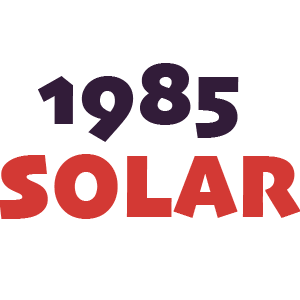US BATTERY STORAGE: Capacity reached nearly 10.8 GW in Q1, 3.17 GW planned in Q2
The first quarter of 2023 witnessed significant growth in battery storage capacity in the United States, according to data compiled by S&P Global Commodity Insights. This essay will delve into the key findings of the report, highlighting the leading the way in capacity additions and the largest completed projects.
Furthermore, it will discuss the price trends of lithium, a crucial material in battery components. Finally, the essay will upon the projections for the second quarter of 2023 and the expected future growth of battery storage capacity in the country.Growth in
Q1:During the first quarter, the United States added 710 MW of battery storage capacity, representing a 7% increase from the end of 2022. This data includes facilities that commenced commercial operation or were synchronized to the grid. Remarkably, the California Independent System Operator (CAISO) maintained its position as the leader in battery storage capacity, accounting for 5.199 GW, or 48.2% the total capacity in the US.
Simultaneously, the Electric Reliability Council of Texas (ERCOT) experienced the most substantial capacity addition in Q1, concluding the quarter with 3.287 GW, equivalent to 30.5% of the total US capacity.Lithium Prices:The decline in lithium prices continued through a significant portion of 2023 after reaching record-high levels in 2022., in the past two weeks, there has been a slight rise in prices. As of May 24, Platts assessed seaborne lithium prices on a CIF North Asia basis at $38,000/mt for carbonate and $45,000/mt for hydroxide, as per S&P Global Commodity Insights data. Comparatively, last year, carbonate and hydroxide reached their respective highs of $78,000/mt and $84,700/mt.Major Q1 Projects:The largest projects completed in the first quarter were primarily located in ERCOT and the Western Electricity Coordinating Council (WECC). Notable examples include Acciona Energy North America's 190-MW BT Cunningham Storage facility in Texas,
Aypa Power Development's 155.5-MW Wolf Storage facility, and Key Capture Energy's 51.5-MW KCE TX 19 and KCE TX 21 facilities. Additionally, NextEra Energy Resources' 50-MW Buena Vista Energy Center facility in New Mexico and Arizona Public Service's 50-MW El Sol BESS facility in Arizona contributed to the growing battery storage capacity.Leading Operating Capacities:Following the Q1 additions, NextEra Energy Resources maintained its position as the leading operator of battery storage capacity in the US with 1.421 GW. Axium Infrastructure secured the second spot with 733 MW, closely followed by Vistra Energy with 673 MW, LS Power Development Affiliates with 615 MW, and Terra-Gen Power with 581 MW.Q2 Expectations:If the proposed Q2 additions amounting to 3.177 GW are completed and connected to the grid, the total battery storage capacity in the US would reach nearly 14 GW, according to compiled data. While Q1 favored ERCOT, the West is poised to regain its prominence in Q2 additions. Developers in CAISO are expected to contribute 1.623 GW, accounting for 51.1% of all planned additions, while WECC is projected to add 1.2 GW, representing 38% of the total. ERCOT is slated to be third, with 200 MW, or 6.3% of Q2 additions.Major Q2 Projects:The top five largest projects proposed for completion in Q2 are situated in the Western US. Vistra Energy's 350-MW Moss Landing Energy Storage 3 facility in California, NextEra Energy Resources' 260-MW Sonoran Solar Energy facility in Arizona, DE Shaw Renewable Investments' 150-MW Arroyo Energy Storage facility in New Mexico, RWE Clean Energy's 137-MW Fifth Standard Solar PV facility in California, and RWE Clean Energy's 131-MW CED Westside Canal Battery Storage facility in California are set to contribute significantly to the growing battery storage capacity in the region.Future Projections:Looking beyond Q2, CAISO is projected to reach 6.852 GW of battery storage capacity by the end of 2023, followed by an estimated capacity of 9.352 GW by the end of 2024. This projection underscores the accelerating growth and increasing importance of battery storage in meeting the energy demands of the United States.Conclusion:The first quarter of 2023 witnessed substantial growth in battery storage capacity in the United States, with impressive contributions from ERCOT and CAISO. The declining prices of lithium have played a significant role in facilitating the expansion of battery storage projects. Looking ahead, the second quarter holds promising prospects, with the West expected to dominate planned additions. developments signify the country's commitment to clean and sustainable energy sources, setting the stage for further advancements in battery storage capacity in the coming years.


